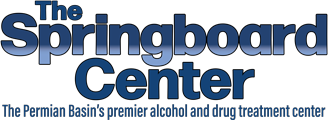You show up to work every day with a smile. Your colleagues see you as the reliable one who gets things done. Your family thinks you have it all together. But inside, you feel empty and exhausted.
This is the reality for millions living with high-functioning depression.
They excel at their jobs, maintain relationships, and check off their daily tasks. Yet beneath the surface, they battle feelings of sadness and despair that never seem to lift.
The signs of high-functioning depression are often invisible to others because these individuals have mastered the art of appearing fine.
Unlike the stereotypical image of depression, high-functioning depression doesn’t stop people from living their lives. It just makes every day feel harder than it should be.
Recognizing these hidden warning signs could be the first step toward getting the help you or someone you love truly needs.
Related: Stress, fear, anxiety…the vulnerability of addiction during a pandemic
Definition and Overview of High-Functioning Depression
High functioning depression isn’t an official medical term. Mental health doctors often call it persistent depressive disorder or dysthymia. People with this condition have long-term depression symptoms that last for years. Unlike major depression, these symptoms are less severe but stick around longer.
The main trait of high-functioning depression is keeping up with normal daily activities while feeling chronically sad. These people go to work, attend social events, and handle their duties. They might even do great in their careers or school. However, they do all of this while carrying heavy emotional weight.
People with high-functioning depression often become experts at hiding their struggles. They learn to wear masks that show the world what others expect to see. This constant act becomes tiring over time. The energy spent keeping up appearances leaves little room for dealing with the real depression underneath.
Silent symptoms of depression in high-functioning people include constant feelings of emptiness, ongoing tiredness, and a sense that life lacks meaning. These symptoms don’t stop basic functioning but seriously hurt quality of life.
Differences Between High Functioning Depression and Major Depression
Understanding the differences between high-functioning depression and major depression helps explain why one form often goes unnoticed.
Major depression usually includes severe symptoms that make daily functioning hard or impossible. People might miss work, cut themselves off completely, or struggle with basic self-care.
High functioning depression vs. clinical depression shows key differences in how severe symptoms are and how they affect daily life.
Clinical depression often includes big changes in behavior that others notice quickly. Family members, friends, and coworkers can usually tell when someone is struggling with major depression.
High-functioning depression symptoms are more subtle. The person keeps their routines and meets their duties. They might seem slightly less energetic or excited, but not enough to raise red flags. This subtlety makes it harder for both the person and their loved ones to spot the problem.
The length of time also differs between these conditions. Major depression episodes usually last weeks or months with stronger symptoms. High-functioning depression involves chronic, low-level symptoms that can last for years without treatment.
Both conditions need professional help, but high-functioning depression often goes untreated longer. Being able to function normally can create a false sense that everything is manageable without help.
Common Signs of High-Functioning Depression

Spotting the characteristics of high-functioning depression requires looking beyond surface behaviors. These signs often hide behind a front of normalcy and success.
Constantly Putting on a Brave Face
People with high-functioning depression become skilled actors in their own lives. They develop an automatic response to put on a positive face in social situations. This act becomes so natural that even close friends and family members don’t see their struggles.
The brave face includes forced smiles, upbeat responses to casual questions, and joining social activities despite feeling empty inside. They might be the person who always asks others how they’re doing while never sharing their own struggles.
This constant act creates extra stress and tiredness. The energy needed to keep this front up throughout the day leaves little emotional strength for personal healing or real connections.
Achieving Professional Success Despite Mental Struggles
Many people with high-functioning depression do great in their careers or school. They might get promotions, awards, or recognition for their work. This success often hides their internal struggles and can even strengthen the belief that they don’t need help.
Work becomes a distraction from emotional pain. Staying busy with professional duties provides temporary relief from depressive thoughts. However, this success often comes at a big personal cost.
The drive for achievement might come from perfectionism or a need to prove their worth. They may set unrealistically high standards for themselves and feel like failures when they don’t meet these expectations.
Difficulty in Maintaining Personal Relationships
While they might do well professionally, people with high-functioning depression often struggle with close relationships. They have trouble being vulnerable or real with partners, friends, and family members.
Relationships need emotional energy and openness that feels overwhelming when dealing with depression. Key signs include:
- Withdrawing from social gatherings
- Declining invitations frequently
- Limiting deep conversations with loved ones
- Feeling disconnected even in crowds
This isolation makes the depression cycle worse. The lack of meaningful connections removes important sources of support and understanding that could help with healing.
Emotional Responses Associated with High Functioning Depression
The emotional world of high-functioning depression involves complex feelings that contradict outward appearances.
Chronic Feelings of Sadness Masked by Smiles
Living with high-functioning depression means carrying persistent sadness while appearing happy to others. This emotional contradiction creates internal conflict and confusion. The person might question whether their feelings are valid since they can still function normally.
The sadness isn’t always intense or overwhelming. Instead, it’s a constant background presence that colors daily experiences. Happy moments feel muted or temporary. Accomplishments bring little satisfaction or joy.
This chronic sadness often includes feelings of emptiness or numbness. People describe feeling like they’re going through the motions of life without really experiencing it. The disconnect between inner experience and outer appearance becomes exhausting to maintain.
Avoidance of Vulnerability and Authentic Emotions
People with high-functioning depression often avoid situations that require emotional vulnerability. They redirect conversations away from personal topics or deflect attention with humor or questions about others.
This avoidance extends to their relationship with themselves. They might stay constantly busy to avoid sitting with their feelings. Quiet moments become uncomfortable because they allow space for difficult emotions to surface.
The fear of vulnerability often comes from shame about their struggles. They believe they should be grateful for their blessings and feel guilty about experiencing depression despite their successes.
Related: How Should I Prepare for Rehab?
Physical Symptoms Often Overlooked

High-functioning depression includes physical symptoms that people often dismiss or blame on other causes.
Persistent Fatigue and Low Energy Levels
Chronic tiredness is a hallmark of high-functioning depression. Despite getting enough sleep, people feel tired throughout the day. This fatigue goes beyond normal tiredness from busy schedules or stress.
The fatigue affects both physical and mental energy. Simple tasks feel overwhelming, even when they’re completed successfully. The person might need extra effort to do things that used to feel automatic.
This persistent tiredness often gets worse throughout the day. Mornings might feel manageable. By afternoon or evening, the exhaustion becomes more noticeable and harder to hide.
Sleep Disturbances and Insomnia
Sleep problems frequently come with high-functioning depression. Common issues include:
- Trouble falling asleep
- Waking up multiple times during the night
- Early morning awakening hours before the alarm
- Feeling tired despite getting enough hours of sleep
Racing thoughts or worry often interfere with quality rest. Some people sleep too much but still feel tired during the day.
Poor sleep quality creates a cycle that makes depression symptoms worse. Lack of rest affects mood control, energy levels, and the ability to cope with daily stress.
Changes in Appetite and Weight
High-functioning depression can cause big changes in eating patterns. Some people lose their appetite and eat much less than usual. Others might overeat or use food as a way to cope with emotional pain.
These changes might not be dramatic enough for others to notice, but they represent big shifts from the person’s normal patterns. Weight changes might be gradual and blamed on stress or busy schedules.
Emotional eating often provides temporary comfort but leads to guilt and shame afterward. This creates another layer of negative feelings that add to the depression.
The Impact on Daily Life
Understanding how high-functioning depression affects daily life helps explain why it’s so challenging to recognize and address.
Managing Responsibilities and Expectations
People with high-functioning depression often keep high standards for themselves across all areas of life. They fulfill work duties, family responsibilities, and social commitments despite feeling overwhelmed internally.
This management comes at a big personal cost. They might sacrifice self-care, hobbies, or relaxation to meet external expectations. The pressure to maintain their image of competence becomes another source of stress.
The fear of disappointing others or being seen as weak motivates them to keep pushing through difficult periods. This prevents them from seeking help or making necessary changes to support their mental health. Daily life becomes a performance rather than authentic living.
Coping Mechanisms and Their Limitations
Coping strategies for high-functioning depression often involve staying busy, avoiding difficult emotions, or relying on external validation. While these might provide temporary relief, they don’t address underlying issues.
Common coping mechanisms include:
- Working too much to avoid feelings
- Perfectionism in all areas of life
- People-pleasing behaviors
- Avoiding time alone with thoughts
These strategies might help maintain functionality in the short term but can make symptoms worse over time.
Healthy coping strategies include therapy, medication when appropriate, regular exercise, mindfulness practices, and building real relationships. However, people with high-functioning depression often resist these approaches because they require acknowledging their struggles.
Seeking Help and Support
Recognizing when to seek help for high-functioning depression can be challenging because the symptoms don’t dramatically interfere with daily functioning.
Importance of Professional Therapy
Professional therapy provides needed support for people with high-functioning depression. A skilled therapist can help identify patterns, develop healthy coping strategies, and address underlying issues contributing to depression.
Therapy offers a safe space to remove the mask and explore real feelings without judgment. This process can feel scary at first but leads to genuine healing and improved quality of life.
Different therapeutic approaches work for different people. Cognitive-behavioral therapy helps change negative thought patterns. Dialectical behavior therapy teaches emotional regulation skills. Psychodynamic therapy explores deeper psychological patterns.
How to identify high-functioning depression often starts with honest self-reflection in a therapeutic setting. Professional guidance makes this process safer and more effective.
Support Groups and Community Resources
Support for high-functioning depression extends beyond individual therapy. Support groups connect people with others who understand their experiences. Sharing struggles with people who have similar challenges reduces isolation and shame.
Community resources might include mental health organizations, online forums, or wellness programs. These resources provide additional tools and perspectives for managing depression.
Building a support network takes time and effort but creates lasting benefits. Having people who understand your struggles makes the journey toward healing less lonely and more manageable. The National Alliance on Mental Illness (NAMI) offers local support groups and educational resources for people dealing with depression and their families.
Start Your Journey to Healing with The Springboard Center
If you recognize signs of high-functioning depression in yourself or a loved one, know that help is available. You don’t have to keep wearing a mask while suffering inside.
The Springboard Center understands that depression affects people differently, specifically when it comes to addiction.
Recovery from depression and addiction is possible. You deserve to experience genuine joy and fulfillment in your life! Contact us today to begin your journey toward healing. Your path to authentic wellness and lasting hope starts here.




